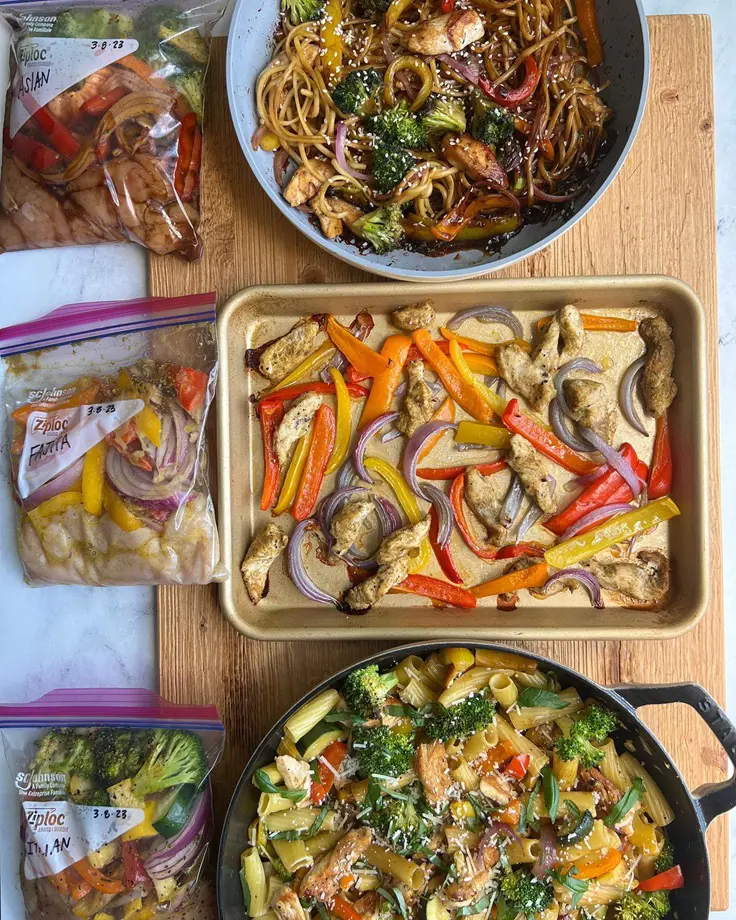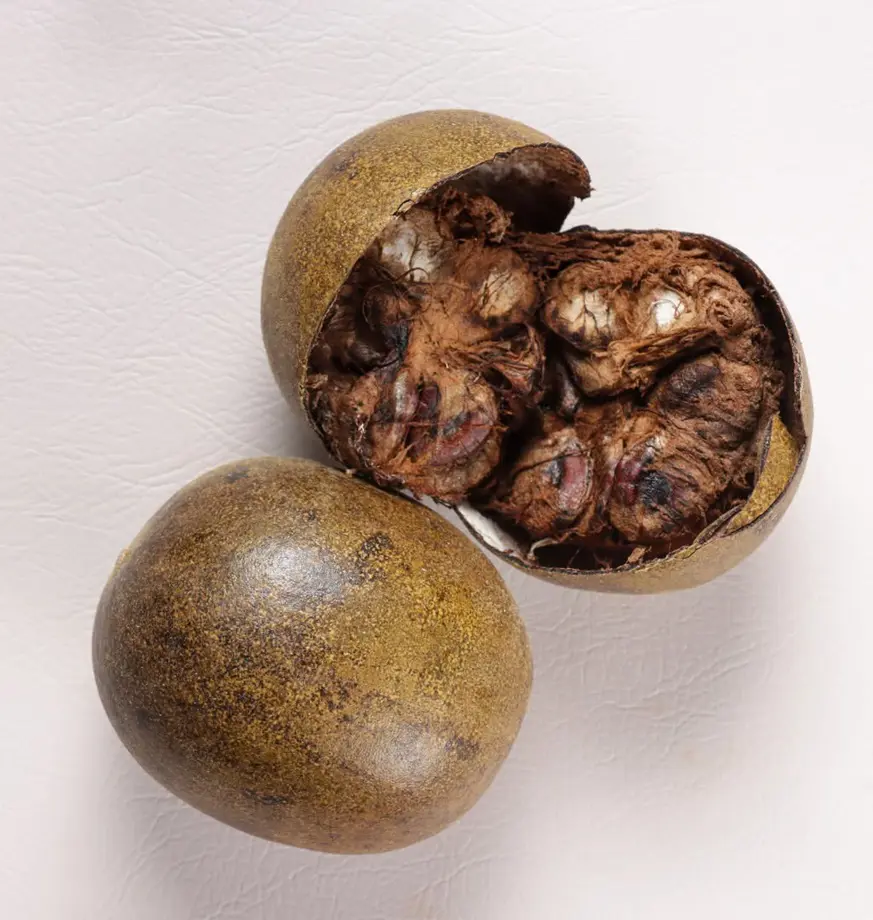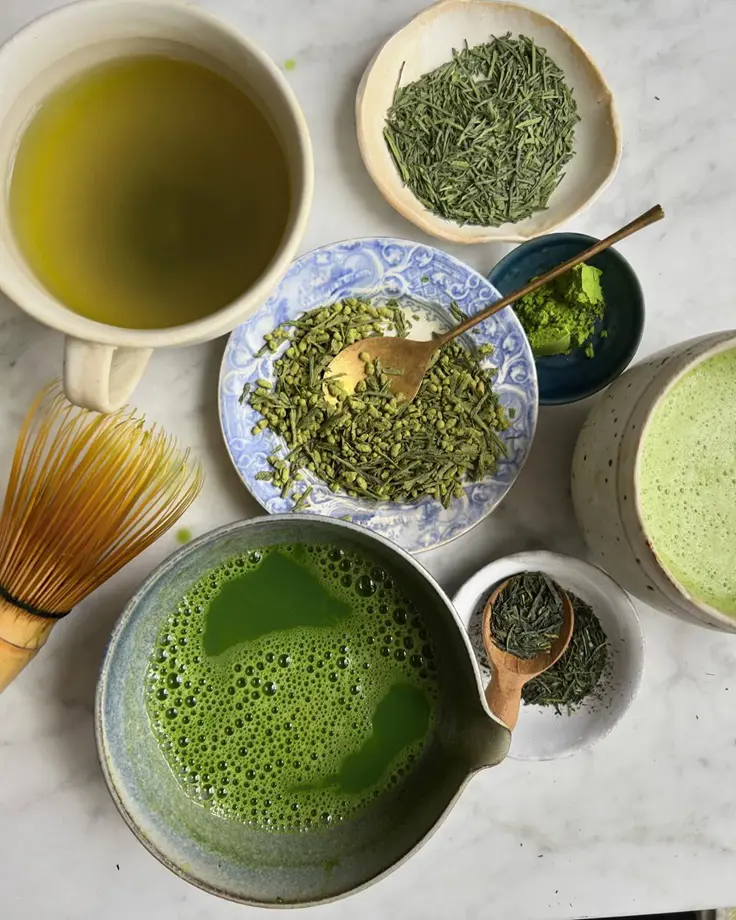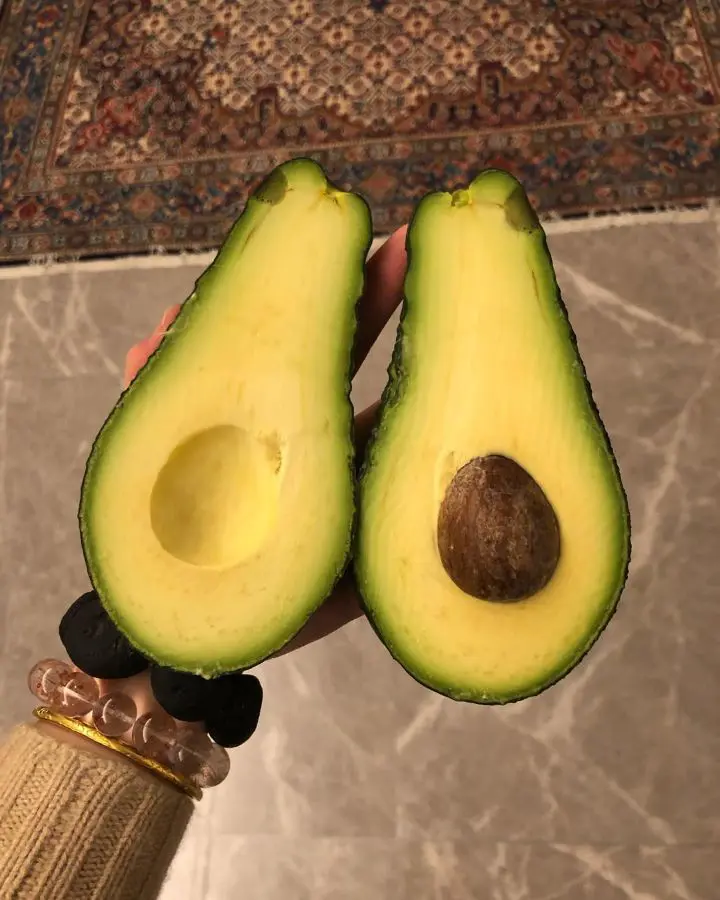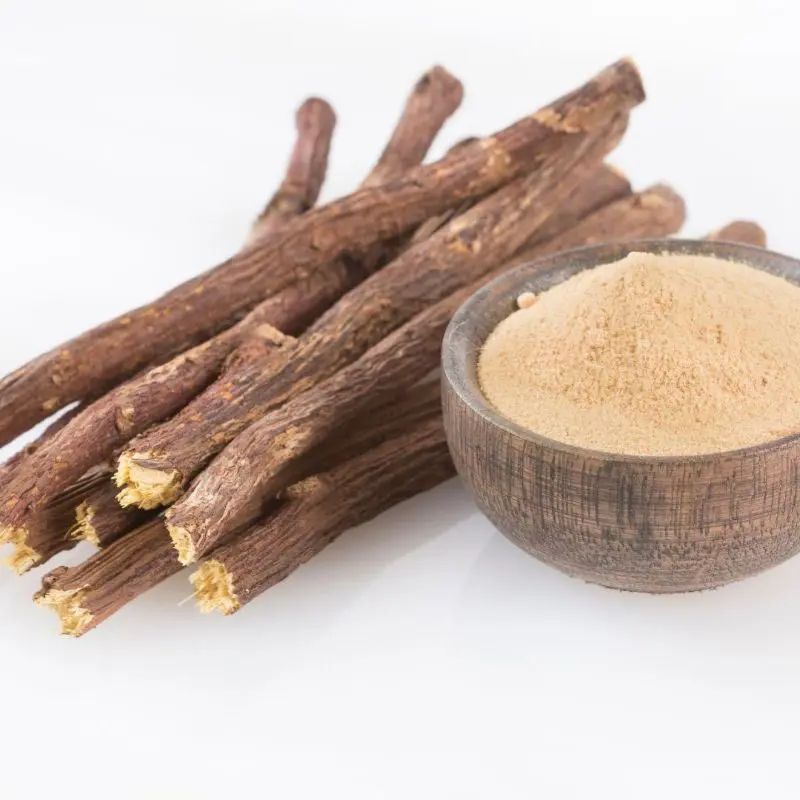How To Make Green Tea: Simple Ways To Make Green Tea Taste Good

This post may contain affiliate links. If you make a purchase through links on our site, we may earn a commission.
Bitter! We all think of this particular taste when we think about a cup of Green Tea! But what if we tell you that Green Tea can be as enjoyable as a glass of Milkshake, with way fewer calories?
Green Tea can be made with various methods, all of which are very simple and quick. Here, we have brought ways to prepare this healthy drink that is less bitter and more tasty!
Ingredients Needed To Make Green Tea
There are just 4 basic ingredients to make a simple cup of Green Tea:
- Loose Green Tea Leaves or Green Tea Bags
- Water
- Kettle
- Strainer
- Optional: any kind of sweetener
How to Make Green Tea
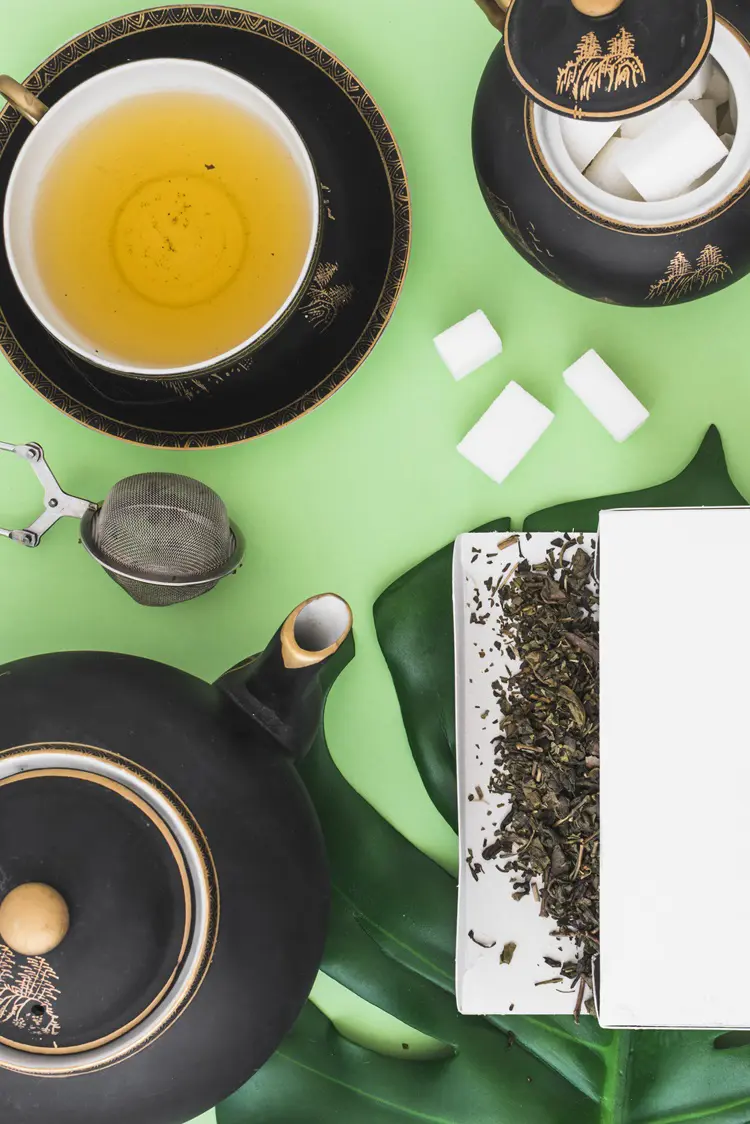
Making Green Tea is one of the easiest tasks you can do in the kitchen. The following steps will guide you to make a perfect cup of Green Tea:
- Start by choosing the best quality green tea leaves.
- Use clear and filtered water for the preparation.
- Heat water between 160 – 180°F (70 – 80°C). For more accuracy, you can use a temperature-controlled kettle, or, allow boiled water to cool for a few minutes before using it.
- Then, add about 1-2 teaspoons of loose green tea or one tea bag in the kettle and allow it to steep for few minutes.
- Remove the tea bag or strain loose leaves quickly. Pressing down on a tea bag releases tannins that make the drink more bitter.
- You might add a slice of lemon, orange, a little honey, sugar, or fresh mint twig to enhance the taste.
- Serve it hot or add some ice cubes to make an iced green tea.
- Try out different kinds of green tea like sencha, gyokuro, or matcha.
How to Make Green Tea Taste Good
All it takes is a little practice and a few tweaks for people to enjoy green tea. The flavors of this drink can range from earthy and rich to airy and grassy. There are many ways you can enjoy Green tea that tastes good, like:
1. Choosing Better Quality Green Teas
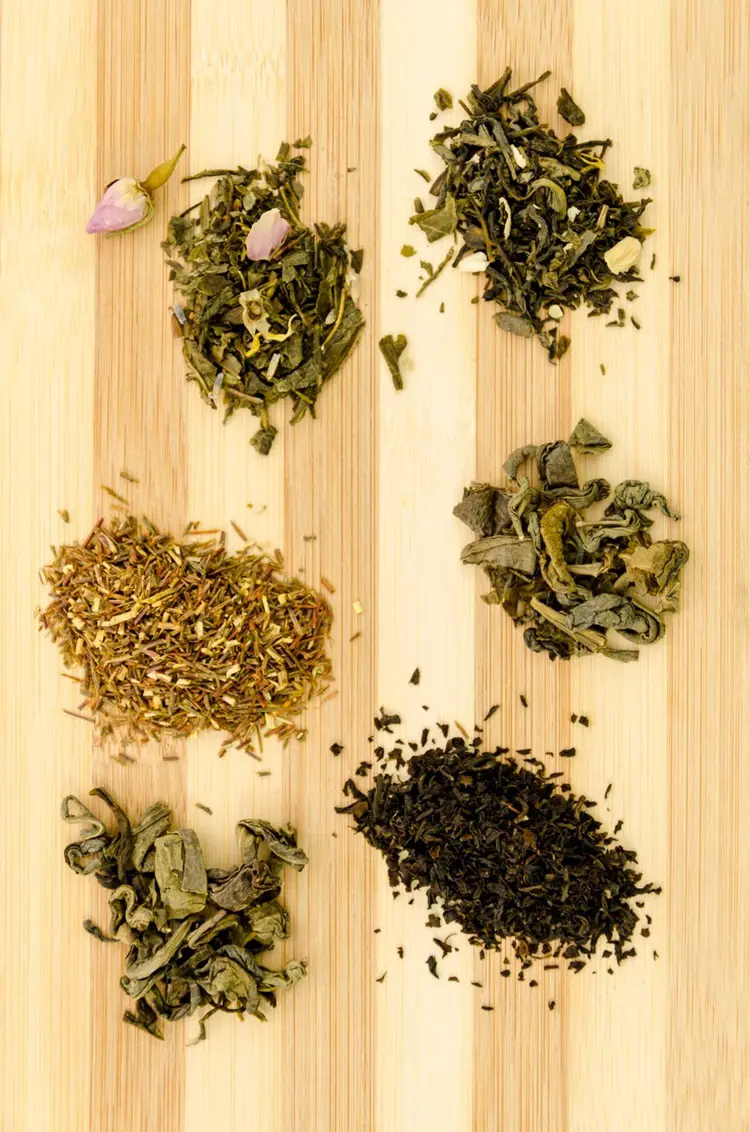
For an exceptional taste experience, it is important to select the best quality green tea. Even though tea bags are convenient, they usually have low-quality leaves that make them less flavorful. On the other hand, select loose tea leaves from trusted sources.
Green Tea from China, Taiwan, and Japan are the best ones. These loose leaves keep most of their natural chemical compounds which result in better taste and possibly higher health benefits. The tasting profile is influenced greatly by the climate in which tea is grown.
Therefore, high-altitude plants grown around the Himalayas will be different from those cultivated in coastal areas. On one hand, Chinese green teas that are usually roasted tend to be richer while, Japanese green tea leaves typically steamed have subtle, sweet, and vegetable-like tastes.
Look for larger sachets that allow full leaves to develop when it comes to tea. It is worth mentioning that, the better the quality of the tea that you have influences its taste and health benefits. Therefore, picky tea lovers should know that they require a good product.
2. Steep Green Tea Correctly
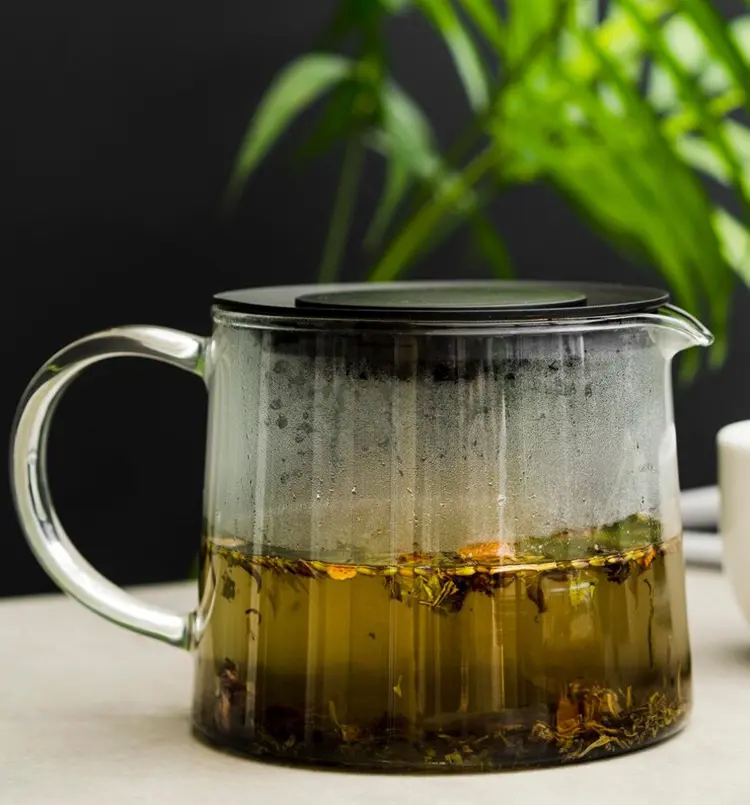
The more you boil and steep the green tea leaves, the more it gets bitter. Steeping for extra minutes can leave you with unpleasant and bitter morning tea!
Just like in cooking, brewing green tea requires constant lookout. Green tea leaves are fragile and can burn quickly. Therefore, green tea shouldn’t steep for longer than 2 minutes at the most. Begin testing out a new green tea blend with a single minute of brewing time only.
Take sips at every thirty-second interval to determine the most suitable flavor for you. In general, if you leave the tea to steep for long periods of time it becomes more bitter. If you prefer light flavors then steep them for shorter periods.
3. Additional Flavors

One way to balance the bitter flavors in green tea could be to add just one or two drops of lemon juice or slices. Freshly squeezed lemon juice can help with any harsh or bitter notes. Just adding a few drops will help cancel out the strong earthy flavor and also enhance the refreshing notes in the green tea.
Similarly, if you want to drink a cup of tea that is sweeter this can be achieved by adding honey, raw sugar, or even stevia while still preserving its natural taste. Every sweetener has a distinct personality, therefore, you can use them to modify how sweet you want your drink to be.
Herbs and spices: They can make green tea more interesting. Tea that has fresh ginger gives it an edge with the zesty and spicy kick, while tea that has mint leaves is again refreshing.
To make an herbal drink, you need to steep 1 or 2 spoonfuls of dried leaves or some fresh leaves of teas like chamomile, peppermint, or even dried fruits, in boiling water for around 5 to 10 minutes. Remove the leaves using a strainer and drink it while it’s still warm or cold.
Did you know that you can also add cinnamon to your green tea? Adding cinnamon sticks or a pinch of nutmeg will provide warmth to your green tea, perfect for cozy nights.
4. The Correct Water Temperature
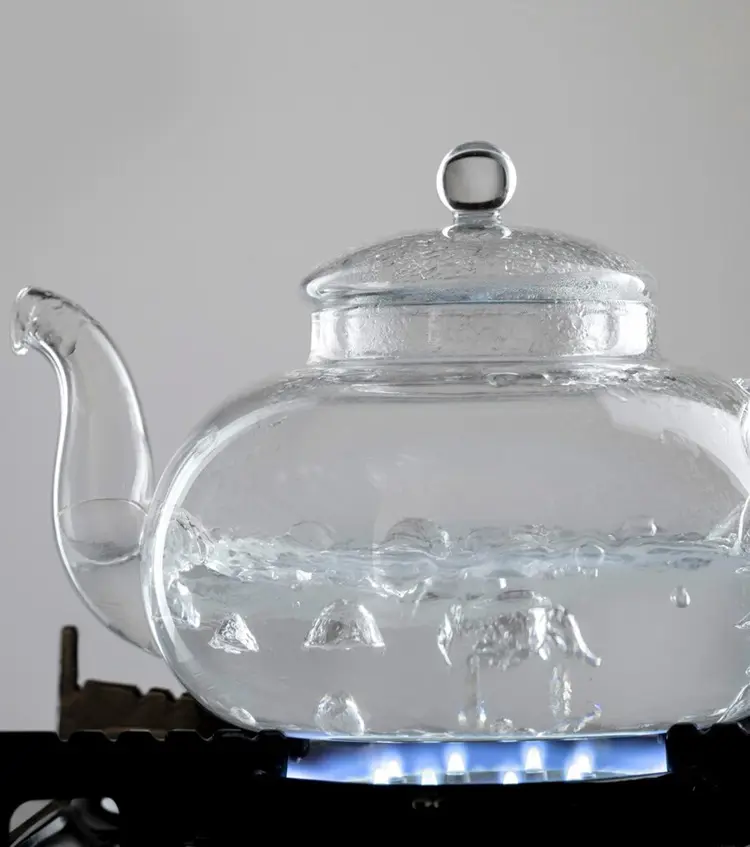
Green tea should generally be brewed at temperatures between 160°F to 180°F (70°C to 80°C). To achieve the best flavor of Green Tea, this ideal water temperature should be mandatorily followed. This exact temperature helps the Green tea to prevent producing excessive tannins, which are the components that make the tea bitter.
The best method for controlling the water temperature would be tea kettles having in-built temperature controls. If you don’t have that, just boil water in a pot on the stove and after it start boiling, take the pot off heat and let stand for 1 or 2 minutes.
If you use the right water temperature, it will help your green tea develop delicate flavors and aromas without being bitter. By following these directions when brewing green tea, you can enjoy a more balanced-tasting cup of Green tea!
5. Cold Brewing and Iced Green Tea

Cold Brewing
Green tea made using the cold brew method means brewing at a low temperature and in a slow process, resulting in a smooth and less bitter taste.
For cold brewing, you will need to take your green tea leaves or tea bags and put them inside of a pitcher filled with cold water before placing them in the refrigerator for approximately 6 – 12 hours. The slow steeping at low temperatures draws out the delicate tastes without causing tannin extraction that could make it bitter.
Iced Green Tea
Green tea can be prepared in various ways but iced green tea is made by brewing it in hot water and letting it cool before serving with ice. It is necessary to steep green tea at the right temperature for some time (2-3 minutes) using hot water at an appropriate temperature (160°F to 180°F).
Once brewed, let the tea cool down to room temperature. Then serve your tea by pouring it into a glass containing ice cubes. This process preserves the tea’s bright flavors and balances the bitterness.
6. Green Tea Boba
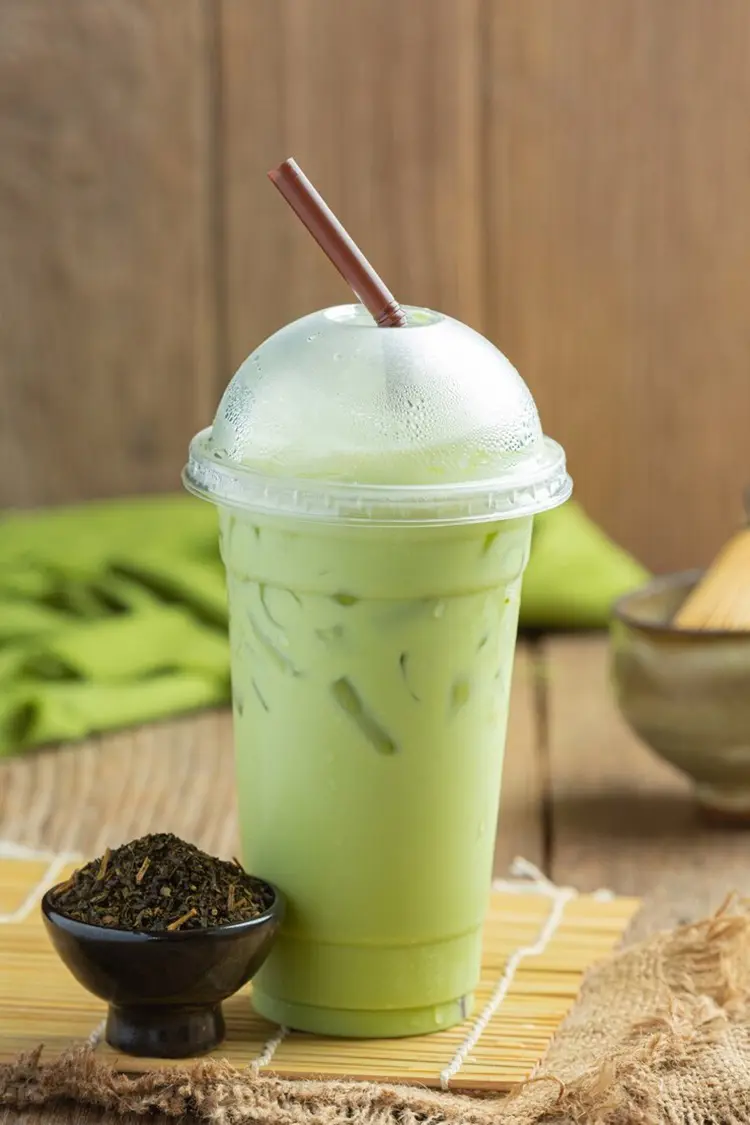
Green Tea Boba is a trendy way to spice up the way you drink Green tea. To make one, just steep the green tea and let it cool down for a few minutes. Prepare the Tapioca pearls according to the instructions or until they are chewy and translucent.
Once the tea and pearls are ready, mix them together, and add a sweetener of your choice, such as honey or sugar to taste. For extra creaminess, consider adding milk or a non-dairy alternative. You can also blend the tea with ice for an icy, frothy drink. Serve all the mixed ingredients with some caramel syrup and ice.
With its soothing properties from the green tea complemented by boba's texture, this drink is fun and packed with many health benefits.
Some Tips For Preparing Green Tea

-It's important to use the appropriate temperature when brewing your cup of green tea, add water at 160°F to 180°F (70°C to 80°C) during the process so as not to end up getting that bitter taste. Too much heat might cause bad substances to be released into the tea.
-The proper amount of tea should be measured. Take one teaspoon of green tea leaves or one tea bag per cup of water for a better taste. Having an excessive amount of it will result in an overly strong and even aggressive drink.
-Leave green tea for about 2 to 3 minutes. If you steep it for a long time, then you’ll have a bitter taste but if you don’t steep it enough time, then you won’t extract its flavor completely.
-Prevent over-extraction. Take away the tea leaves or tea bag quickly after steeping.
-Have filtered water. Clean, pure water should be used to avoid any unwanted substances that can affect the quality of your tea.
-Pre-heat your teapot. Pour some hot water into your kettle or mug prior to brewing so that temperature is maintained during the infusion process.
-You can add fresh lemon juice, honey, or other herbs to green tea in order to emphasize its sweetness and reduce its bitterness.
-The shelf-life of tea is much longer. In order to keep them fresh and flavorful, store your green tea leaves in an airtight container away from light, moisture
-Use a tea infuser. Loose-leaf teas need a good infuser so that their leaves may expand freely and release their flavors.
To preserve the best taste, always use fresh leaves for each brewing session. Reusing some may result in a tea with lower potency and taste. Allow your iced green tea to cool correctly. For this drink, it’s important to let it reach room temperature before putting it into the refrigerator.
Health Benefits of Green Tea
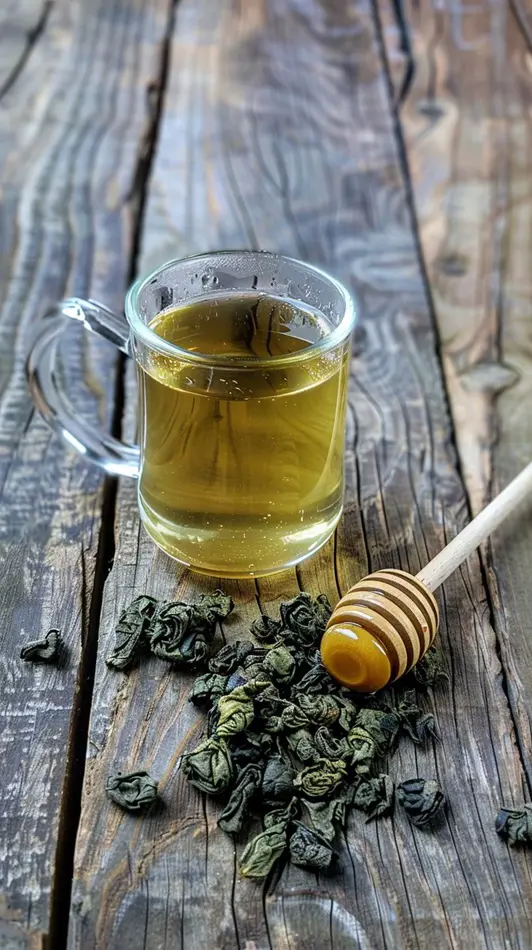
Green tea is packed with nutrients that help nurture your mind and body. Some of the benefits of green tea are listed below:
Contains plant-based antioxidant compounds
Antioxidants like catechins, are responsible for reducing stress, helping you feel calm, and might aid in reducing the risk of chronic diseases. Similarly, some antioxidants can slow down the aging process and prevent cells from dying hence; green tea is an essential part of any diet for health purposes.
Enhances Brain Function
Some research has proved that drinking green tea on a regular basis can improve your cognitive function and therefore, result in a better functioning brain. Green tea is composed of caffeine and L-theanine which have synergistic effects in boosting cognitive capabilities.
While L-theanine helps to relax without causing sleepiness, caffeine enhances vigilance and attentiveness. With this blend the overall mind can be sharper; one’s attention spans are elongated; and memory is improved therefore it can be a good beverage for students as well as someone doing regular mental activities.
Improves Heart Health
Green tea contains antioxidants which are helpful for the cardiovascular system. They lower cholesterol and blood pressure. Therefore, people who drink green tea do not have heart attacks. This is because its effects on blood vessel functionality and its antioxidant properties help maintain a good condition of the heart.
Supports Weight Loss
Green tea increases metabolism and fat oxidation, hence assisting in weight loss. The catechins present in green tea, especially EGCG, are known for increasing metabolic rate and facilitating fat burning. Regular intake with healthy eating habits and exercises may help control body weight better thus leading to better results in weight loss.
Enhances Digestive Health
In addition to other health benefits, green tea can also help improve digestive health. This is because it encourages the multiplication of good gut bacteria. The polyphenols contained in green tea act as prebiotics, thus facilitating a stable gut microbial environment. By enhancing gut health, digestion and the absorption of nutrients are improved as well, in addition to assisting in the reduction of digestive discomfort.
Boosts Immune System
With all the nutrients mentioned before, Green tea also happens to be anti-inflammatory and will help your body to reduce inflammation in your body. It contains polyphenols that boost immunity by enhancing white blood cell activity and reducing inflammation. Therefore, regular intake of green tea may assist your body to resist pathogens and other nutrients more effectively.
Reduces Risk of Certain Cancers
The components found in Green tea have been examined for their potential anti-cancer qualities. These substances can assist in destroying the development of cancerous cells and minimizing tumors. Although further investigation is necessary, it has been associated that drinking green tea often decreases the chance of various types of cancers, including breast and prostate cancer.
Recent posts
Lifestyle
Lifestyle
20 Foods That You Can’t Freeze
Freezing foods can be a realistic time-saver, it is one of the most convenient ways to preserve food in our kitchens for later use. It can do both, reduce food waste as well as save time in food preparation. However, there are exceptional cases...
Lifestyle
Is Agave Good For You? Benefits, Uses And Risks
When you stroll through the sweetener section at a supermarket or any other store, you probably notice bottles of golden agave nectar or agave's inulin with labels boasting claims like "natural" and "healthy". But is this viscous sweetener which come...
Lifestyle
Is Monk Fruit Healthy? Benefits, Nutrition And Risks
Monk fruit is a simple vine of the gourd family that has recently gained fame as a sweetener. The fruit is hard to find in the market and has been less cultivated around the world, it's native to Southeast Asia. A zero-calorie sweetener, there is a l...
Lifestyle
How Much Caffeine Is in Green Tea
Green tea, a tea popular for its health benefits, comes with a gentle caffeine boost. Due to this low caffeine level, the drink can be considered perfect for those who want to stay alert without the jitters. The availability of caffeine in green tea ...
Lifestyle
The Benefits Of Avocado Seeds You Must Know About
After devouring the avocado, we have the habit of dumping the seed without giving it a second thought. However, this part of the fruit is just as essential as the avocado because it delivers numerous nutrients and potential health benefits that might...
Lifestyle
How Much Caffeine Is Too Much In One Day?
Without even realizing it, caffeine is stapling in our everyday lives. Our mornings usually begin with a cup of coffee, likewise, to get through the afternoon slump we might sip on an energizing drink or grab a refreshing soda on a sunny day to quell...
